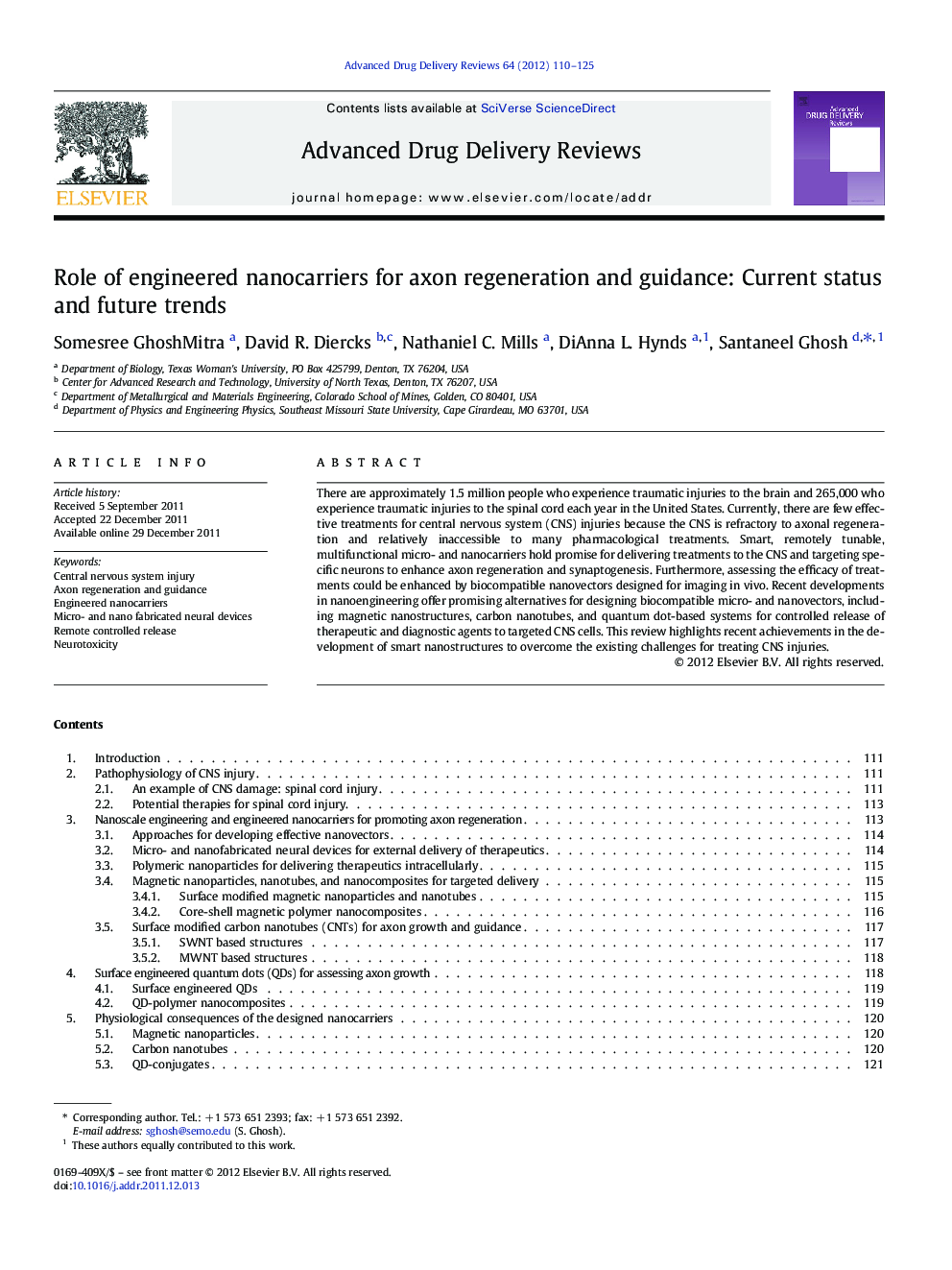| Article ID | Journal | Published Year | Pages | File Type |
|---|---|---|---|---|
| 2071284 | Advanced Drug Delivery Reviews | 2012 | 16 Pages |
There are approximately 1.5 million people who experience traumatic injuries to the brain and 265,000 who experience traumatic injuries to the spinal cord each year in the United States. Currently, there are few effective treatments for central nervous system (CNS) injuries because the CNS is refractory to axonal regeneration and relatively inaccessible to many pharmacological treatments. Smart, remotely tunable, multifunctional micro- and nanocarriers hold promise for delivering treatments to the CNS and targeting specific neurons to enhance axon regeneration and synaptogenesis. Furthermore, assessing the efficacy of treatments could be enhanced by biocompatible nanovectors designed for imaging in vivo. Recent developments in nanoengineering offer promising alternatives for designing biocompatible micro- and nanovectors, including magnetic nanostructures, carbon nanotubes, and quantum dot-based systems for controlled release of therapeutic and diagnostic agents to targeted CNS cells. This review highlights recent achievements in the development of smart nanostructures to overcome the existing challenges for treating CNS injuries.
Graphical abstractFigure optionsDownload full-size imageDownload high-quality image (251 K)Download as PowerPoint slide
